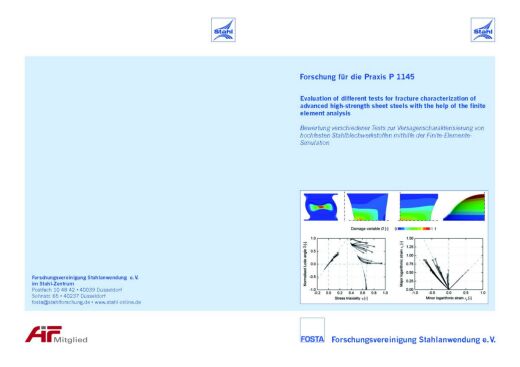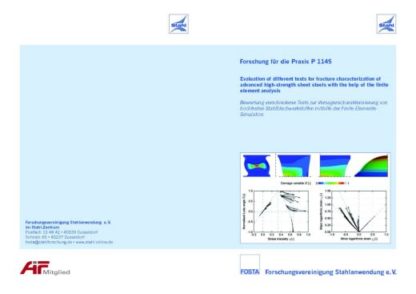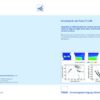Description
P 1145 – Evaluation of different tests for fracture characterization of advanced high-strength sheet steels with the help of the finite element analysis
The research project, which was initiated and technically as well as in part financially supported by the Working roup “Characterization of damage models” of the Materials ommittee of the Steel Institute VDEh, dealt with evaluation of common tests for fracture characterization of advanced high-strength sheet steels with the help of the finite element analysis. The tests included the shear test on n ASTM-type specimen,shear test on a Miyauchi-type specimen with a grove, and shear test on a butterfly-type specimen with a loft for in-plane shear, three-point ending test on a flanged specimen and tensile test on a holed specimen for uniaxial tension, three-point bending test on a full specimen and tensile test on a waisted specimen for plane strain, as well as bulge tests on circular specimens with punches of Ø 20 mm and Ø 100 mm for equibiaxial tension.
A dual-phase steel of 600 MPa, a complex-phase steel of 1000 MPa and a presshardening steel of 1500 MPa, with thicknesses of 0.8 mm, 1.5 mm, and 3.0 mm each were used for the evaluation. The flow behavior was described by the Hill’48 yield criterion and isotropic strain-rate-dependent hardening. For the description of the fracture behaviour, the models of CrachFEM for ductile shear fracture and ductile normal fracture wereemployed. It should be noted that the fracture behaviour of the investigated materials for this project was described by different testing laboratories with the help of different testing procedures and evaluation approaches. For this reason, the materials should not be compared among one another based on the fracture behaviour descriptions used here. The partly controversial differences in the forming limits of the materials by no means impair the test evaluations. Rather, they provide a good occasion to point out that unification of test procedures and their evaluation are absolutely necessary for a correct application of the approaches to description of the fracture behaviour used in this project in the industrial practice.
Sufficiently small solid elements were used to account for localization of the field variables and 3D stress states. The evaluation was performed based on the spatial distribution of the plastic strain and damage variable at the moment of crack initiation and time variation of the stress and strain state at the crack initiation location. The results indicate that it is not possible to unconditionally recommend a particular test for thewhole variety of different advanced high-strength sheet steels and their thicknesses at any of the studied stress states. However, at each studied stress state, a test can be chosen which shows an acceptable compromise between its advantages and disadvantages and thus can contribute to a suitable test selection for fracture characterization. For good characterization accuracy, however, some issues like accurate etermination of the fracture strain or appropriate assumption of the characteristic stress state at the crack initiation location remain open. Moreover, the results reveal a demand for appropriate complimentary tests which provide fracture strains at stress states ranging from in-plane shear to uniaxial tension.
The research project was carried out at Institut für Umformtechnik und Umformmaschinen, Universität Hannover. FOSTA has accompanied the research work and has organized the project funding from the Foundation for Steel Application Research.
Only available in german language.
Authors:
B.A. Behrens, I. Peshekhodov
Published in:
2016




